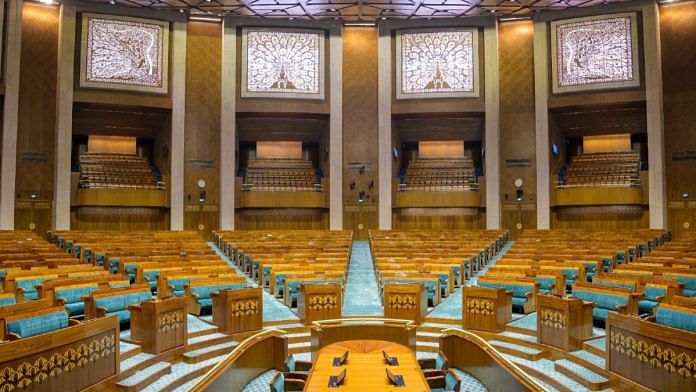Thank you dear subscribers, we are overwhelmed with your response.
Your Turn is a unique section from ThePrint featuring points of view from its subscribers. If you are a subscriber, have a point of view, please send it to us. If not, do subscribe here: https://theprint.in/subscribe/
Much has been said about the new building of the Indian Parliament, although most of it comes from a politically driven partisan view. Architecture is never divorced from its socio-political context but this a rare occasion when an architectural edifice is at the centre of a political controversy. Amidst this polarised social discourse it becomes ever so important to look into the eye of the storm with a dispassionate gaze.
The new Parliament building is the centrepiece of the much debated Central Vista project. Given the rich and complex architectural history of the site, any proposal to revamp the premise would have invited criticism and opposition and so has the present design by architect Bimal Patel. But before we turn towards analysing the new building it would be wise to look into the rear-view mirror and study from similar precedents in post-independence history of the sub-continent.
Starting with the much celebrated Capitol Complex of Chandigarh designed by famous Swiss-French architect Le Corbusier. The assembly building in the Capitol was indeed a bold statement in raw concrete declaring the arrival of a modern, democratic nation. In the city ‘unfettered by the traditions of its past” as Nehru described it, the assembly building presented a ravishingly new industrial aesthetic for the temple of democracy. The complete absence of plinth and the assembly hall capped with a roof resembling cooling tower of a nuclear power plant were radical ideas that would be met by raised eyebrows even today. In neighbouring Bangladesh, Jatiyo Sangsad Bhaban at Dhaka was designed by American architect Louis Kahn for the erstwhile East Pakistan government. As against Corbusier’s acrobatic forms Kahn’s design echoes the spirit of monumental buildings of the subcontinent without imitating any of them. His fortress like design with huge concrete walls with geometric cut-outs for natural light underscores the spiritual dimension of architecture than the profane. It’s a rare example where the democratic institution of Parliament is raised to an exalted status to evoke a spiritual experience. In the southern island nation of Srilanka the Parliament building was designed by Srilankan architect Geoffrey Bawa. This building majestically sits on a sprawling site with artificial lakes capped by expansive sloping roofs. The building design although rooted in modernist traditions of architecture does not lose its Srilankan character. Bawa has metaphorically planted western modernism to a tropical country. In each of these masterpieces of 20th century architecture the narrative power of architecture is harnessed to shine light on the path for its people to follow.
Having said that one must submit that none of them were built on preoccupied sites. None had a site as complex and layered as the one in New Delhi. Designers of the new Indian Parliament neither had access to the tabula rasa approach nor an expansive site to place the architectural sculpture on.
So how does one intervene when the site is nestled within a milieu of heritage buildings, juxtaposed with an already iconic Parliament building? The post-independence architectural interventions in Central Vista should serve as a point of reference. The IGNCA built in 1987 designed by American architect Ralph Lerner which was heavily criticised for continuation of Luytens legacy and total absence of ‘Indianisation’ of the of Central Vista. The runner-up entry in the competition by architect Gautam Bhatia treated the then Rajpath as a river and buildings were designed as a ghats on its banks. The complete design of IGNCA was never built due to political considerations. Nonetheless the idea of ‘Indianisation’ lingered on.
These pieces are being published as they have been received – they have not been edited/fact-checked by ThePrint.
Also read: PM Modi tours Egypt’s iconic Pyramids built by ancient Pharaoh’s


